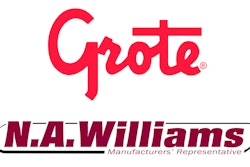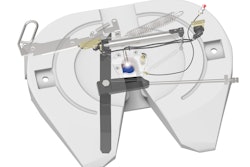The Internet of Things (IoT) is the network of physical objects or “things” embedded with electronics, software, sensors and network connectivity which enables these objects to collect and exchange data.
In 1998, FleetPride published a report on the future concepts they saw coming to the heavy-truck parts and service market. A surprising number of these items have eventually morphed into today’s Internet of Things, such as torque sensing bolts, failure predicting components and ‘data-log’ multi-port condition monitoring portals.
McKinsey Global Institute predicts that the Internet of Things (IoT) will generate up to $11 trillion in value to the global economy by 2025. This is real.
However, I always worry about industries jumping to technology to solve a problem without clearly defining the problem … casting light where there was no darkness.
Can you toss me that microfiche catalog?
It is quite possible the Internet of Things will become a supercharged maintenance solution for many of our truck operator customers. But I think it would be a mistake to jump into it just because we can. Analytics, the ‘weaponizing’ of all this nearly unlimited data, needs to proceed at a pace comparative to the collection and aggregation of unbelievably intimate in-use data.
Predictive and prescriptive maintenance of machines (79 percent), customer/marketing related analytics (77 percent) and analysis of product usage in the field (76 percent) are the top three applications of Industrial Analytics in the next 1 to 3 years, according to that same McKinsey report.
Real-Time Integration Is the Payoff for Industrial Analytics
Industrial Analytics (IA) describes the collection, analysis and usage of data generated in industrial operations and throughout the entire product lifecycle, applicable to any company that is selling physical products.
It involves both new and old methods of data capture and traditional statistical modeling. But it is the addition of real-time integration that is essential for enabling connectivity between Internet of Things (IoT), and our ability to use this technology to draw our whole supply chain closer.
Where we fit is not even settled—supplier or distributor—don’t bet on being the platform owner. Bet on being inside someone else’s platform or a node on some other-directed network. Make your strategy accordingly so that whatever platform you end up with, you can jump to another platform if they start to get in the way of your vision.
There is real business value in all of this data. It’s not that hard to find important user cases, but do you want to do this in lockstep with yesterday’s thinking about how you’re going to secure it and how you’re going to manage it.
Step up! Identify your differentiators. What are you doing? What is your plan? How are you different? What’s your vision? How do you plug into the ecosystem?
There’s a much higher bar for impressing a customer at this point than there was five years ago. Vendor managed inventory (VMI) is yesterday’s trick in most distribution-served markets. I think some of us still struggle with barcodes.
IoT startup advice. Engage with local academia and start-ups and nontraditional innovators in your area. Pay attention at HDAW. READ EVERYTHING! Think very freely. Imagine something, and then find the right people to execute it. Talk to fleets, service providers, competitors and suppliers.
It doesn’t take a lot of resources anymore to start dealing with this stuff. It just takes a couple of really smart people. Get out there and get your hands dirty.
Bill Wade is a partner at Wade & Partners and a heavy-duty aftermarket veteran. He is the author of Aftermarket Innovations. He can be reached at [email protected].









